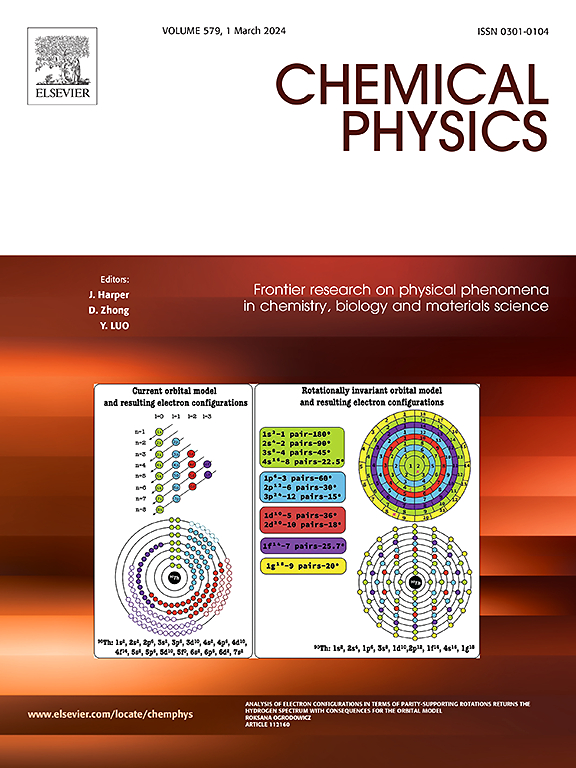Layer dependent optical properties of γ-graphyne
IF 2.4
3区 化学
Q4 CHEMISTRY, PHYSICAL
引用次数: 0
Abstract
Stacking two-dimensional (2D) materials vertically provides a distinct platform for creating hybrid materials with adjustable properties. Based on this research study, density functional theory (DFT) was complemented by including van der Waals density function, where γ-graphyne and stacking structures (monolayer, bilayer, tri-layer and bulk forms) were systematically considered. According to our findings, AB stacking is more stable than AA-stacking, with an electrical bandgap that changes depending on the stacking configuration. We found a new two-dimensional (2D) carbon allotrope based on the AB-stacked configuration, which goes beyond conventional van der Waals (vdW) homogeneous stacking. The AB-stacked configuration represents a structurally optimized arrangement with distinct electronic characteristics compared to other stacking forms. Interestingly, tri-layer γ-graphyne can also be used to create various 2D carbon allotropes with unique carbon networks. We observed that bulk γ-graphyne exhibits either semiconductor or metallic behavior, depending on the stacking arrangement. Additionally, the interlayer vdW interactions cause a redshift in the optical absorption peaks for bulk γ-graphyne compared to the monolayer, with notable differences in the spectra for various stacking configurations below 1 eV. These results highlight few-layer γ-graphyne's encouraging potential for developing carbon-based nanoelectronics. Additionally, this introduces a novel approach for designing new two-dimensional carbon allotropes by vertically stacking graphyne with acetylene linkages.
γ-石墨炔的层相关光学性质
垂直堆叠二维材料为创建具有可调节属性的混合材料提供了一个独特的平台。本研究在密度泛函理论(DFT)的基础上,加入范德华密度函数,系统地考虑了γ-石墨烯和堆积结构(单层、双层、三层和块状结构)。根据我们的研究结果,AB堆叠比aa堆叠更稳定,其电带隙随堆叠结构而变化。我们发现了一种新的基于ab堆叠构型的二维(2D)碳同素异形体,它超越了传统的范德华(vdW)均匀堆叠。与其他堆叠形式相比,ab堆叠构型代表了一种结构优化的排列,具有明显的电子特性。有趣的是,三层γ-石墨炔也可以用来制造具有独特碳网络的各种2D碳同素异形体。我们观察到块体γ-石墨烯表现出半导体或金属行为,这取决于堆叠排列。此外,与单层相比,层间vdW相互作用导致块状γ-石墨炔的光学吸收峰红移,在1 eV以下的不同堆叠构型下光谱差异显著。这些结果突出了低层γ-石墨烯在发展碳基纳米电子学方面的令人鼓舞的潜力。此外,本文还介绍了一种设计新型二维碳同素异形体的新方法,即石墨炔与乙炔键的垂直堆叠。
本文章由计算机程序翻译,如有差异,请以英文原文为准。
求助全文
约1分钟内获得全文
求助全文
来源期刊

Chemical Physics
化学-物理:原子、分子和化学物理
CiteScore
4.60
自引率
4.30%
发文量
278
审稿时长
39 days
期刊介绍:
Chemical Physics publishes experimental and theoretical papers on all aspects of chemical physics. In this journal, experiments are related to theory, and in turn theoretical papers are related to present or future experiments. Subjects covered include: spectroscopy and molecular structure, interacting systems, relaxation phenomena, biological systems, materials, fundamental problems in molecular reactivity, molecular quantum theory and statistical mechanics. Computational chemistry studies of routine character are not appropriate for this journal.
 求助内容:
求助内容: 应助结果提醒方式:
应助结果提醒方式:


